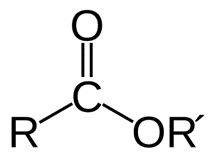1000339-79-6
1000339-79-6
Ethyl 2-(pyrrolidin-1-yl)-4-trifluoromethyl-1,3-thiazole-5-carboxylate
Synonyms
- 1000339-79-6
- ethyl 2-(pyrrolidin-1-yl)-4-trifluoromethyl-1,3-thiazole-5-carboxylate
- ethyl 2-pyrrolidin-1-yl-4-(trifluoromethyl)-1,3-thiazole-5-carboxylate
- Ethyl 2-(Pyrrolidin-1-yl)-4-(trifluoromethyl)thiazole-5-carboxylate
- Ethyl 2-(Pyrrolidin-1-yl)-4-(trifluoromethyl)-1,3-thiazole-5-carboxylate
Molecular Formula
C11H13F3N2O2S
Get a free no-obligation quote
We typically respond within 30 minutes during business hours!
Molecular Formula
C11H13F3N2O2S
Iupac Name
ethyl 2-pyrrolidin-1-yl-4-(trifluoromethyl)-1,3-thiazole-5-carboxylate
Canonical Smiles
CCOC(=O)C1=C(N=C(S1)N2CCCC2)C(F)(F)F
StdInChi
InChI=1S/C11H13F3N2O2S/c1-2-18-9(17)7-8(11(12,13)14)15-10(19-7)16-5-3-4-6-16/h2-6H2,1H3
StdInChiKey
UFCVXWWKIIUOGF-UHFFFAOYSA-N
Molecular Weight
294.30
Exact Mass
294.06498332
Average Mass
294.293 Da
Monoisotopic Mass
294.06498332
Boiling Point
366.8±52.0 °C at 760 mmHg
Flash Point
175.7±30.7 °C
Density
1.4±0.1 g/cm3
Vapour Pressure
0.0±0.8 mmHg at 25°C
Enthalpy of Vaporization
61.3±3.0 kJ/mol
Refractive Index
1.511
Molar Refractivity
64.3±0.3 cm3
Polar Surface Area
70.7 Ų
Polarizability
25.5±0.5 10-24cm3
Surface Tension
42.2±3.0 dyne/cm
Molar Volume
214.6±3.0 cm3
xLogP3AA
3.4
Acd LogP
2.22
Acd LogD Ph55
2.45
Acd Bcf Ph55
43.04
Acd Koc Ph55
514.18
Acd LogD Ph74
2.45
Acd Bcf Ph74
43.04
Acd Koc Ph74
514.18
Hydrogen Bond Donor Count
0
Hydrogen Bond Acceptor Count
8
Rotatable Bond Count
4
Heavy Atom Count
19
Isotope Atom Count
0
Defined Atom Stereocenter Count
0
Undefined Atom Stereocenter Count
0
Defined Bond Stereocenter Count
0
Undefined Bond Stereocenter Count
0
Covalently Bonded Unit Count
1
H Bond Acceptors
4
H Bond Donors
0
Freely Rotating Bonds
5
Rule of 5 Violations
0
Formal Charge
0
Complexity
334
Compound is Canonicalized
Yes
